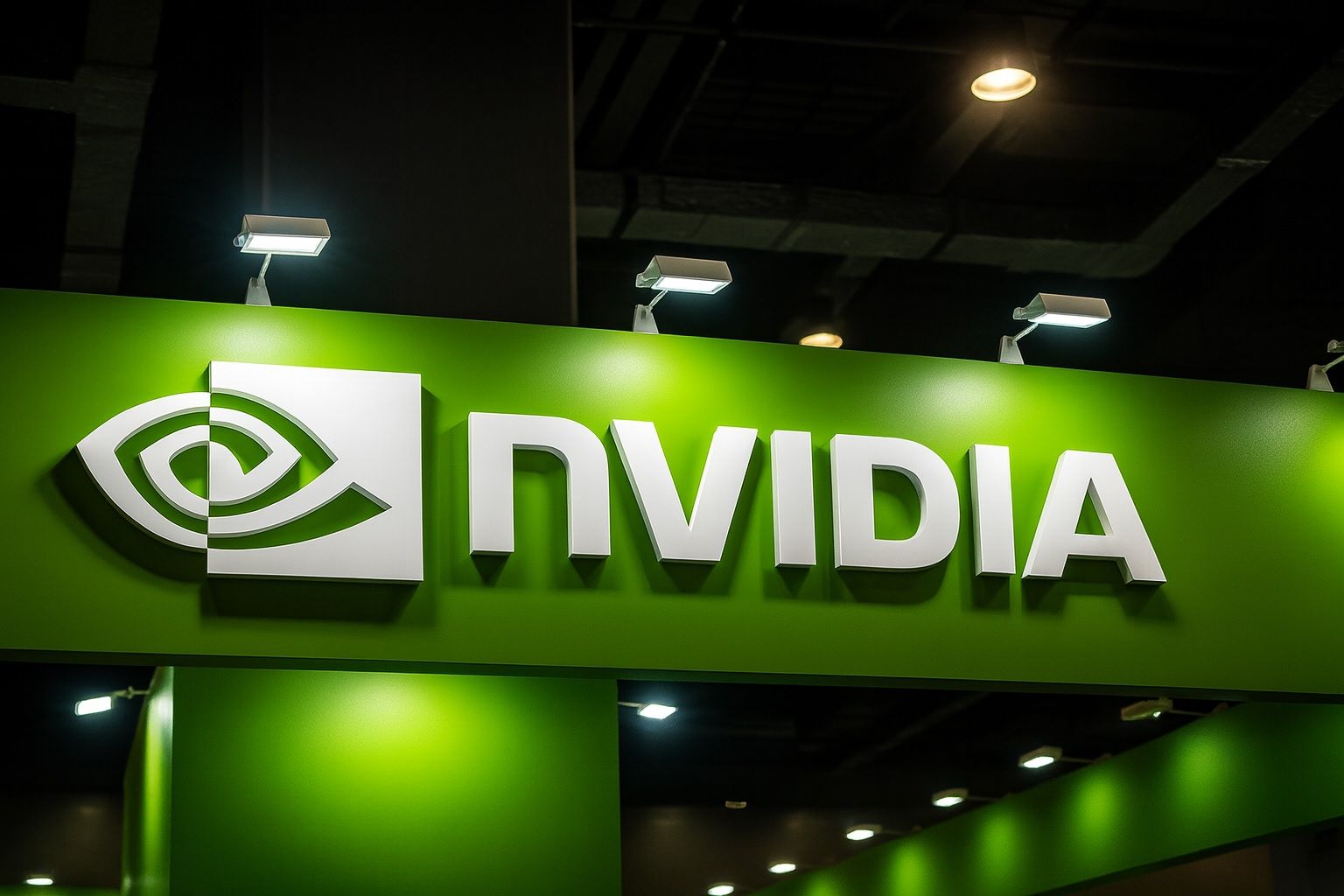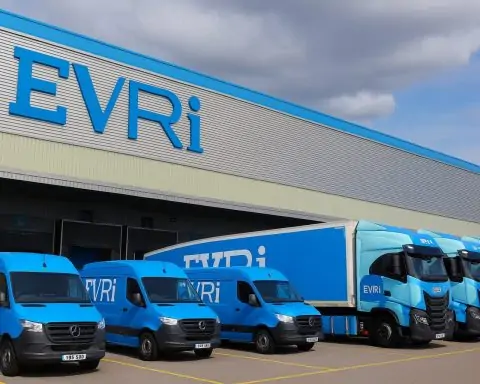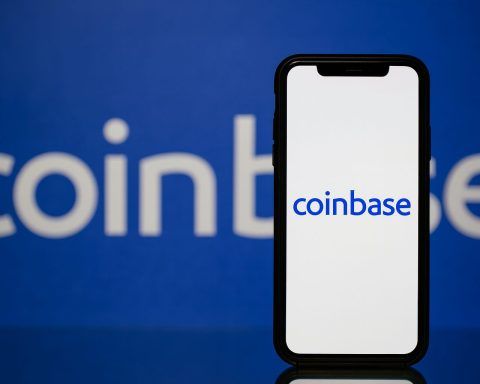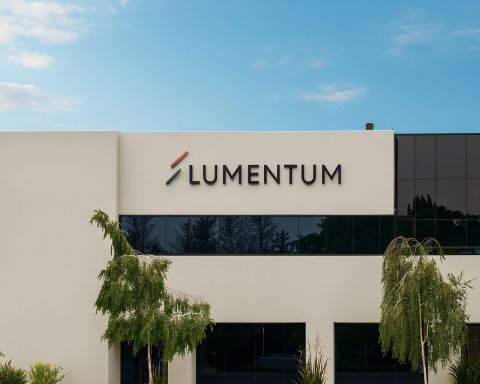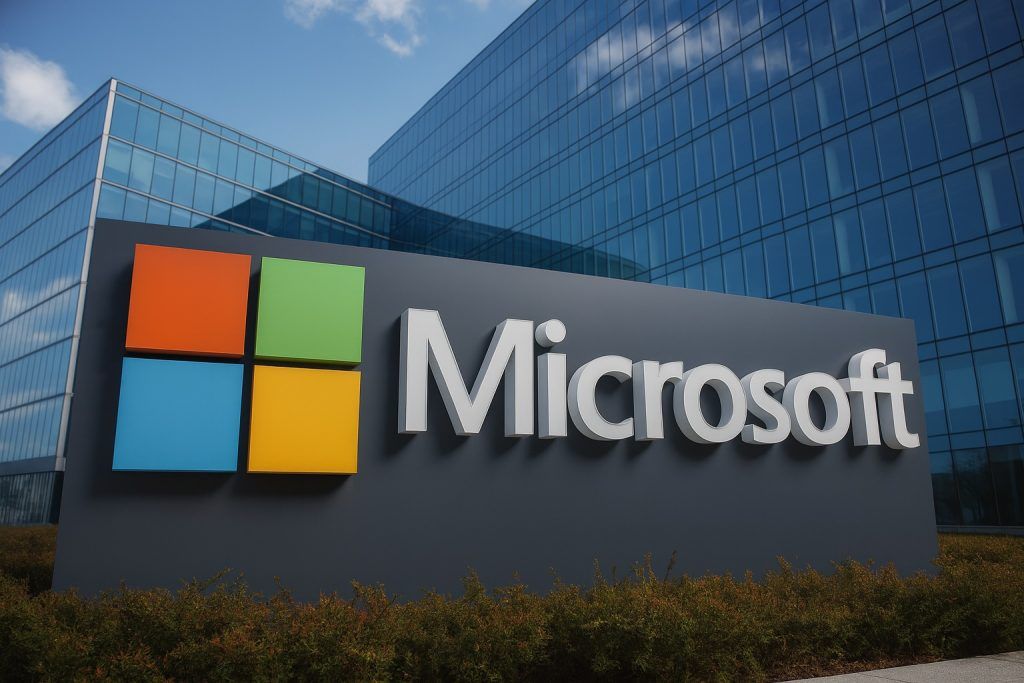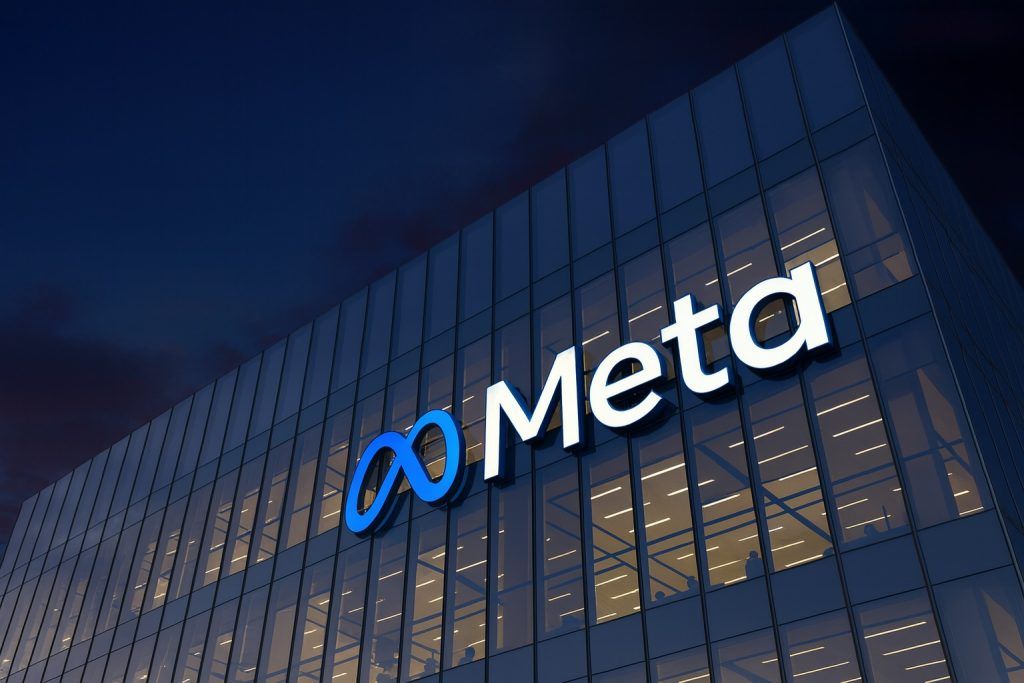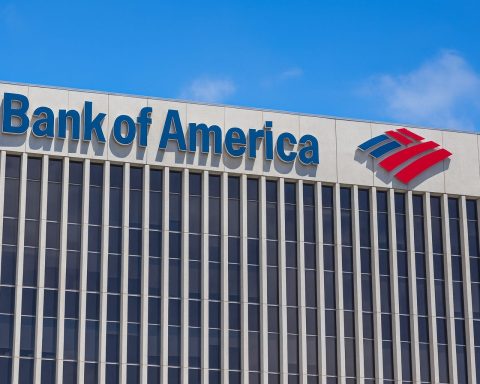Key Facts: – NVIDIA (NASDAQ: NVDA) closed around $202.5 on Oct 31, 2025 [1]. Last week it hit ~$207 (Oct 29), briefly making NVDA the first-ever $5 trillion company [2] [3]. Since late October, shares have oscillated ~$180–207 [4] [5], so the stock currently sits near all-time highs. Year-to-date NVDA has gained roughly 50% [6], far outpacing broad indexes. CEO Jensen Huang sold ~25,000 shares on Oct 29 (~$5.2M) under a pre-set plan [7], part of ~$1.5B insiders have taken off the table in 2025. In the latest quarter (FY2026 Q2), revenue jumped 56% YoY to $46.7B [8] (≈88% from data-center AI chips) with ~72% gross margin (50% net) – driving the rally. Analysts are overwhelmingly bullish: 46 of 49 rate NVDA a Buy [9], and the average 12-month price target (~$230) implies ~15% upside [10]. (High targets include $300–$320 from top firms [11] [12].) Nvidia reports Q3 results Nov. 19 [13]. Macroeconomic tailwinds – e.g. a modest Fed rate cut (25bp) coupled with “higher-for-longer” caution [14] and a U.S.–China trade truce (paused new tariffs) [15] – have bolstered tech stocks. Sector peers also shine: AMD is up on its own AI deals [16], while Intel lags behind in AI chips. Overall, NVDA is the clear leader of the “Magnificent Seven” tech rally [17] [18].
Market & Macro Context
Late Oct trends favored growth tech. Big Tech earnings surprises (Amazon, Apple, etc.) sparked a broad rally into early November [19]. The Fed cut rates 0.25% last week but signaled uncertainty about more easing [20]. Investors are no longer counting on aggressive rate cuts, as Fed officials (e.g. Atlanta Fed’s Bostic) warned December relief is “not guaranteed” [21]. Simultaneously, U.S.–China tensions eased temporarily: at the Busan summit Presidents Trump and Xi paused a threatened tariff hike and rolled back some duties [22]. That trade thaw acted like “rocket fuel” for stocks [23] – the Philadelphia Semiconductor Index jumped about 5% last week to near record highs [24]. In this environment, NVIDIA – the biggest driver of AI hype – has been a market bellwether. As one ts2.tech analysis noted, easing tariffs and Fed expectations have “helped fuel a broader market rally that Nvidia led” [25] [26].
Stock Performance & Technicals
NVIDIA’s stock soared through October and into November. On Oct. 28, NVDA closed around $201.03, a 5% gain after CEO Huang’s AI announcements [27]. By Oct. 29 it closed $207.04 [28] – a new record – on a 3% gain that day [29]. This made NVDA the first company worth over $5 trillion [30] [31]. After that high, the stock eased slightly (closing ~$202.5 on Oct. 31 [32]) but remains near those peaks. Year-to-date NVDA has roughly doubled from early January [33]. Analysts note the technical momentum is strong: most moving averages (50/100/200-day) are bullish, and daily indicators signal a “Strong Buy” (10 buy signals vs. 0 sell) [34]. The RSI (~53) is neutral, not yet overbought [35]. In short, the chart shows powerful upswing momentum, though profit-taking on any setback is possible.
Recent News & Catalysts
NVIDIA has been at the center of major AI news. At an Oct 28 developers’ conference in Washington, Jensen Huang announced $500 billion in chip bookings and plans to build seven new supercomputers for the U.S. Department of Energy [36]. (The largest, “Solstice,” will house ~100,000 of Nvidia’s newest Blackwell GPUs [37].) These government contracts underscore NVDA’s leadership. That day’s news helped spark the rally (NVDA +5%, closing $201.03 [38]). Huang used the spotlight to praise U.S. AI policy while urging access to Chinese markets [39].
Beyond DOE, Nvidia locked in mega-deals with industry partners. For example, Nvidia signed a $100 billion GPU supply pact with OpenAI, committed $5B into Intel for next-gen CPU–GPU chips [40], and joined a consortium to buy $40B of new data centers (~5 GW of AI capacity) [41]. Sam Altman (OpenAI’s CEO) has quipped “everything starts with compute,” highlighting Nvidia’s role [42]. Competitors have joined the fray: AMD inked a deal to supply ~6 GW of GPUs to OpenAI (stock jumped 34% on the news [43]), Qualcomm and cloud giants unveiled their own AI chips, etc. Still, industry experts note “Nvidia sells every AI chip it can make” – analysts stress the expanding market means multiple winners [44] [45].
One notable development: Nvidia took a stake in Nokia (~$1B investment) to co-develop 5G/AI systems. (A ts2 report noted this Nokia tie-up alongside other deals like Uber self-driving and Stellantis partnership [46].) Such moves diversify NVDA’s influence. Meanwhile, insiders have been locking in gains: Huang’s Oct. 29 sale (25,000 shares) was part of >$1B in insider sales since June [47]. This “profit-taking” is expected after the huge run-up. Ts2 analysts even point out that insider selling helped push NVDA to $5T by week’s end [48].
Financials & Valuation
Nvidia’s fundamentals remain stellar. In FY2026 Q2 (May–July 2025) revenue was $46.7B, +56% YoY [49]. Crucially, 88% of sales came from data-center AI chips [50]. Gross margin was ~72% (net margin ~50%) [51] – extraordinarily high for semiconductors. The company’s gargantuan order backlog (~$500B) [52] suggests years of continuing business. Management has guided that Blackwell/Rubin GPUs in 2025–26 could generate ~$500B on ~20M units (versus consensus ~$366B) [53].
Despite growth, NVDA trades at lofty multiples. Trailing P/E is ~53×, forward P/E ~33× [54], both well above industry norms. Bloomberg notes NVDA’s market cap (~$4.94T today) is more than 10× AMD (≈$430B) and 30× Intel (≈$150B) combined [55]. (By contrast, AMD’s forward P/E is ~67× [56].) As ts2 puts it, such a valuation reflects an immense “AI premium” [57]. Investors will watch the next earnings (Nov. 19) closely: ts2 warns that any signals of slowing AI demand or supply constraints in that report will be pivotal [58].
Analyst Commentary
Wall Street is overwhelmingly bullish. MarketBeat shows 47/49 analysts at Buy/Strong Buy (only 2 holds, 1 sell) [59]. The consensus 12-month price target is ~$230 [60] (implying mid-$200s by late 2026), though the range is wide. Several firms raised targets after the October conference:
- BofA’s Vivek Arya lifted his NVDA target to $275 (from $235) and kept it as a “top pick,” citing $0.5T orders and strong 2025–26 visibility [61].
- Melius Research boosted its target to $300, saying it sees “a glide path to $800B-plus in revenues by the end of the decade” [62].
- DA Davidson nudged its target to $250, noting persistent demand and suggesting consensus is underestimating 2025–26 data-center revenue [63].
Overall, analysts highlight Nvidia’s dominant position – e.g. critical partnerships with Microsoft and OpenAI, and robust CFO commentary. The average $230 target (~13–14% above current) reflects continued upside [64]. Some commentators sound caution. For instance, the lone contrarian (Goldman alumnus) still argues NVDA’s value is far lower, but he remains alone. Mostly, pros believe this is a “victory lap” for Nvidia – one strategist noted the AI “bubble” doesn’t appear close to popping at a $5T cap [65].
Peer Comparison
Nvidia is the undisputed leader in AI chips, but competition is heating up. AMD (NASDAQ: AMD) has been on a tear: its stock roughly doubled in 2025 on OpenAI and Oracle deals [66]. AMD’s market cap (~$430B) is tiny compared to NVDA, which means AMD could grow more on percentage terms [67]. (A Motley Fool analyst notes NVDA took an early lead, but AMD’s cheaper pricing may make it an ongoing threat [68].) However, AMD’s valuation is also stretched (trailing P/E ~152×, forward ~67× vs. NVDA 58×/45×) [69]. Intel (NASDAQ: INTC) trails both; it’s investing in AI (recently pivoting foundry to produce some Microsoft AI chips), but Intel’s revival in AI is less certain. Other large tech firms (Google, Amazon, Meta) have launched AI silicon, yet their chips are still nascent. In short, NVIDIA sits atop the sector: as a Reuters analyst put it, NVDA is the “clear winner” of the AI revolution with strong partnerships, commanding ~70% gross margins at ~35× next-year EPS [70]. The consensus view is that the AI market can support multiple players, but Nvidia has the lead and scale others will chase [71] [72].
Outlook
Looking ahead, Nvidia’s short-term stock trajectory hinges on a few key factors. The next earnings report (Nov. 19) must deliver or exceed expectations on revenue and outlook. Analysts expect another blowout: as of now ~80–90% rate NVDA a Buy [73]. Macro-policy matters too: any surprise hawkishness from the Fed or a China trade spat could trigger profit-taking. On the bullish side, the massive AI capex cycle isn’t near peaking – Business Development leads like JPMorgan and Microsoft continue pouring capital into data centers with Nvidia chips. Reuters Breakingviews quotes Matt Britzman noting that $5T is “more than a milestone” and NVDA is “one of the best ways to play the AI theme” [74]. Likewise, Bokeh Capital’s Kim Forrest quips that at $5T, Nvidia “has earned this victory lap” and the AI “bubble” still shows no sign of popping [75].
In summary, NVIDIA remains the hottest stock in tech. Its historic rally – up roughly 12-fold since late 2022 – reflects real earnings growth (not just hype) [76]. Financial metrics are spectacular, and analysts’ models foresee many more quarters of double-digit growth. Yet at its current valuation, Nvidia must execute perfectly to justify the price. Investors should be mindful of risks (geopolitics, valuation excess) even as they recognize that Nvidia’s chips are central to every major AI initiative today. For now, the consensus is that the AI supercycle is still ramping up – and with it, Nvidia’s stock may have room to run [77] [78].
Sources: Current stock data, news and analyst reports from Reuters, MarketBeat, Investing.com and TS2.Tech [79] [80] [81] [82] [83] [84] [85] [86].
References
1. www.marketbeat.com, 2. www.reuters.com, 3. ts2.tech, 4. ts2.tech, 5. www.marketbeat.com, 6. ts2.tech, 7. ts2.tech, 8. ts2.tech, 9. www.marketbeat.com, 10. www.marketbeat.com, 11. www.investing.com, 12. ts2.tech, 13. www.reuters.com, 14. ts2.tech, 15. ts2.tech, 16. ts2.tech, 17. ts2.tech, 18. ts2.tech, 19. ts2.tech, 20. ts2.tech, 21. ts2.tech, 22. ts2.tech, 23. ts2.tech, 24. ts2.tech, 25. ts2.tech, 26. ts2.tech, 27. www.reuters.com, 28. www.reuters.com, 29. www.reuters.com, 30. www.reuters.com, 31. ts2.tech, 32. www.marketbeat.com, 33. ts2.tech, 34. www.investing.com, 35. www.investing.com, 36. www.reuters.com, 37. www.reuters.com, 38. www.reuters.com, 39. www.reuters.com, 40. ts2.tech, 41. ts2.tech, 42. ts2.tech, 43. ts2.tech, 44. ts2.tech, 45. www.nasdaq.com, 46. www.reuters.com, 47. ts2.tech, 48. ts2.tech, 49. ts2.tech, 50. ts2.tech, 51. ts2.tech, 52. ts2.tech, 53. www.investing.com, 54. ts2.tech, 55. ts2.tech, 56. www.nasdaq.com, 57. ts2.tech, 58. ts2.tech, 59. www.marketbeat.com, 60. www.marketbeat.com, 61. www.investing.com, 62. www.investing.com, 63. www.investing.com, 64. www.marketbeat.com, 65. www.reuters.com, 66. ts2.tech, 67. www.nasdaq.com, 68. www.nasdaq.com, 69. www.nasdaq.com, 70. www.reuters.com, 71. ts2.tech, 72. www.reuters.com, 73. ts2.tech, 74. www.reuters.com, 75. www.reuters.com, 76. ts2.tech, 77. www.investing.com, 78. www.reuters.com, 79. www.reuters.com, 80. www.reuters.com, 81. ts2.tech, 82. ts2.tech, 83. www.marketbeat.com, 84. www.investing.com, 85. ts2.tech, 86. www.reuters.com
